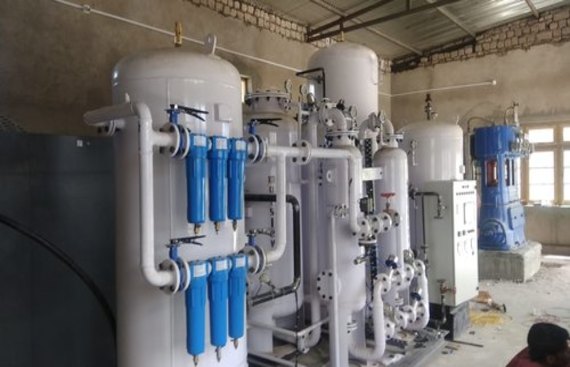Atmanirbhar Move: 18 Medical Institutes to Have Oxygen Plants in Karnataka

With hospitals struggling to deal with the overflow of Covid fatalities who developed breathlessness, the government has decided to arrange 22 oxygen-generation plants in 18 medical institutes all over the state. This is a condition during which Karnataka is reporting around 50,000 positive cases and the case fatality rate in eight districts has crossed one percent.
CN Ashwath Narayan, deputy chief minister and State Covid-19 Ministerial Task Force chief, stated “The idea is to make sure the 18 medical colleges are self-sufficient in oxygen production, and the process is fast-tracked.”
Three of the plants are in Bengaluru. The finance department has given its nod to  62.7 crore proposal and tenders have been invited.
62.7 crore proposal and tenders have been invited.
He adds “With this, institutes can generate medical oxygen on their own instead of depending on outside suppliers.” Each of these plants shall be designed for a stream flow rate of 1,500 litres per minute and can cater to the needs of 250 individuals requiring oxygen support.
The much-needed move has been welcomed by public health experts. Indian Society of Critical Care Medicine (Bengaluru chapter) chairman Dr Sunil Karanth mentioned, “It’s the need of the hour. It is prudent to make medical institutions self-sufficient in meeting their oxygen needs. This will reduce dependency on oxygen production plants, which also have to supply for industrial purposes.”
Dr Karanth pointed out how All-India Institute of Medical Sciences (AIIMS) in Delhi recently succeeded in establishing a plant in record time with DRDO’s support. “Setting up a plant is not a cumbersome process. It is a necessary infrastructure for medical institutions and varsities that see a constant stream of patients in need of oxygen. Moreover, oxygen-generation technologies have developed so much that purity of oxygen for medical usage is on expected lines 93-95 percent,” he added.
A number of public health specialists feel the government might have minimised the present oxygen demand had it acted upon at an earlier stage. Subject specialists had alerted the government on the necessity for ramping up supply in April last year following reports on oxygen scarcity in other nations, including US and Italy. The government was advised to arrange liquid oxygen tanks for 150 to 200-bed hospitals as a instead of relying on cylinders. “But as the severity of the first wave reduced, the government put the proposal on the back burner,".
Nevertheless, the health department revoked the proposal again in December and introduced plans to arrange plants in 10 district hospitals and 30 taluks, at a cost of  38 crore. However after the preliminary discussions, it was not taken ahead as the government didn’t anticipate a second surge of such magnitude.
38 crore. However after the preliminary discussions, it was not taken ahead as the government didn’t anticipate a second surge of such magnitude.
